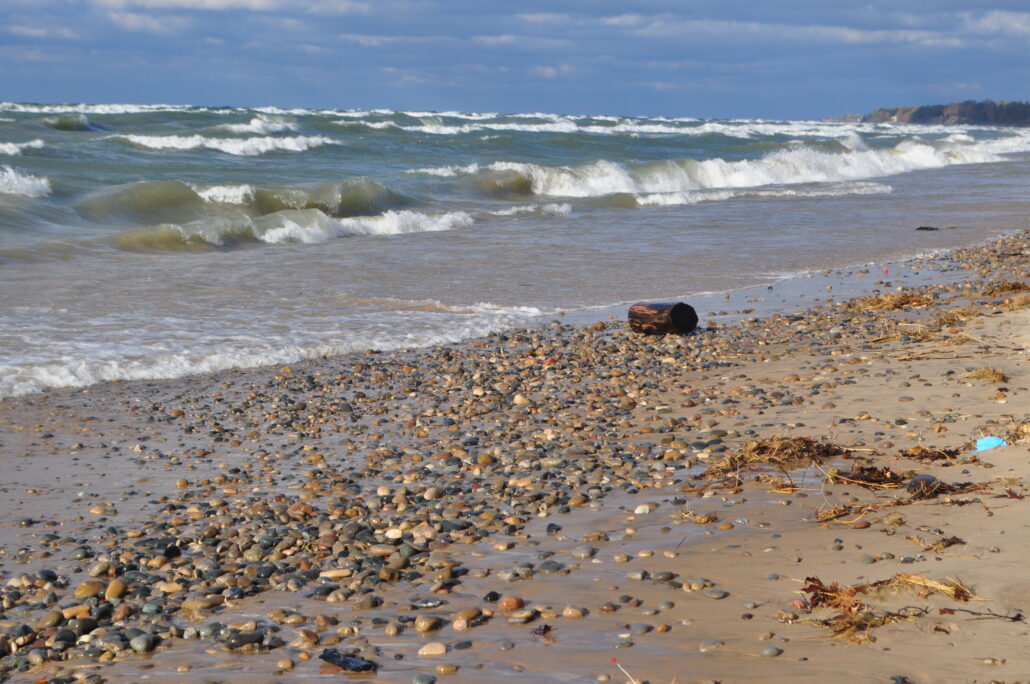By: Krystina Hird, WMEAC Policy Intern
The U.S. Supreme Court declined to hear a court case from Indiana about shoreline property rights earlier this month. The plaintiffs claimed their beach-front property on Lake Michigan extended to the water’s edge and they had the right to restrict access to the public.
The debate about public access to private land around the Great Lakes has waged for decades.
The Michigan Supreme Court’s decision on Glass v. Goeckel in 2005 established the waterfront as a public-trust area where the public may walk, regardless of private property. This trust protects the rights of the public to also use the shoreline adjacent to the water for recreation, like fishing and swimming. The public-trust area goes up to the ordinary high-water mark (OHWM), which was defined by the U.S. Army Corps of Engineers in 1985 for Lake Michigan at 590.5 feet above the lake floor.
In some places, this mark is visible from the action of the water on the land, such as erosion or loss of land plants. More often, however, this mark is unnoticeable to beach users, and the lake levels have been known to rise above the OHWM likely due to climate change, which will continue to increase the variation in water levels on the Great Lakes shores. This ambiguity leads to confusion among public beachgoers and frustration for private property owners.
Regardless of where the OHWM lands, courts in Michigan agree that the public trust doctrine in this case only allows the public to access the private beaches to travel across them, not to sit and stay on the beach which would infringe on private property owners’ rights.
The Cases in Other Great Lake States
Each state that shares a border with the lakes has handled the question of beach access differently. As previously mentioned, Michigan set a numeric value as their OHWM, which is unique to the Great Lakes states.
Ohio defines the OHWM– or the mark to which the public is allowed access to the shoreline– as the “natural shoreline.” In 2009, the Ohio Supreme Court sided with property owners, claiming beachfront property went all the way to where the land met the water on any given day, barring any public access to the beach. However, the court reversed its previous ruling in 2011 to allow beachgoers access up to the “natural shoreline” of all lake beaches.
However, in Minnesota, the OHWM is defined as “an elevation delineating the highest water level that has been maintained for a sufficient period of time to leave evidence upon the landscape, commonly the point where the natural vegetation changes from predominantly aquatic to predominantly terrestrial” and the public is allowed access to private beaches up to this line.
Indiana, Wisconsin, and Pennsylvania use the US Army Corp of Engineers’ definition of the OHWM: “the line on the shore coincident with the elevation contour that represents the approximate location of the line on the shore established by fluctuations of water and indicated by physical characteristics such as shelving, destruction of terrestrial vegetation, presence of litter or debris, or changes in the character of soil.”
The Indiana Supreme Court defended the application of the public trust to its shoreline in 2018, allowing public access to water. So far, this has been the last court case on the shoreline issue since the U.S. Supreme Court refused to hear a case this year.
Each state has managed its shorelines differently and states that border more than one of the Great Lakes, like Michigan, have different definitions of OHWM and allow different amounts of access. Confusion around the use of the Great Lake beaches would be greatly decreased if policies related to these water bodies were more consistent across all adjacent states.
Photo by: Elaine Isely


